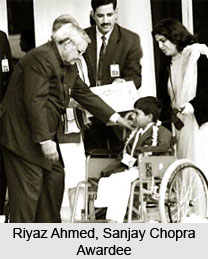Functions of Planning Commission mostly centre on the process of planning for the growth and development of the country over a five-year period. The Commission with the Indian Prime Minister at its head has emerged as a powerful and effective staff agency. The 1950 resolution which set up the Planning Commission of India outlined the following main functions which it needs to perform:
1) Assessment of the material, capital, and human resources of the country, including technical personnel and formulation of proposals for augmenting resources that are found to be deficient.
2) Formulation of Five Year Plans for the most effective and balanced utilization of country`s resources.
3) Determination of stages for the implementation of the Plan and determination of priorities and allocation of resources, for completion of each stage.
4) Determining the nature of the machinery required for the implementation of the Plan in all its aspects.
5) Periodic appraisal of the progress achieved in the execution of each stage of the plan.
6) Perspective planning, and
7) Recommendations for facilitating the discharge of its duties or for a consideration of the prevailing economic conditions, current policies and development programmes; or for an examination of problems referred to it for advice for Central and State governments.
Speaking in more specific terms, its functions are: assessment of resources; priorities of allocation of resources; problem of planning; formulation of the development plan for central and State governments; planning of industrial development; appraisal for time to time of the progress achieved in the execution of each stage of the plan.
The main function of the Planning Commission is to prepare a National Plan which means the five-year plan broken down into annual plans. This is its major responsibility and only the Planning Commission can carry it out. In brief, the Planning Commissions aims at promoting a rapid rise in the standard of living of the people by efficient exploitation of the resources of the country, increasing production and providing opportunities to all for employment in the service of the country. It should be kept in mind that the Commission is not concerned with the implementation of plans, which is the work and responsibility of the various State Governments in India.
Planning Commission plays an integrative role in the development of a holistic approach to the policy formulation in critical areas of human and economic development. In the social sector, schemes which require coordination and synthesis like rural health, drinking water, rural energy needs, literacy and environment protection have yet to be subjected to coordinated policy formulation. It has led to multiplicity of agencies. The emphasis of the Commission is on maximising the output by using limited resources optimally. Instead of looking for mere increase in the plan outlays, the effort is to look for increases in the efficiency of utilisation of the allocations being made.
With the emergence of severe constraints on available budgetary resources, the resource allocation system between the States and Ministries of the Central Government is under strain. This requires the Planning Commission to play a mediatory and facilitating role, keeping in view the best interest of all concerned. It has to ensure smooth management of the change and help in creating a culture of high productivity and efficiency in the Government. In order to spread the gains of experience more widely, Planning Commission also plays an information dissemination role.






